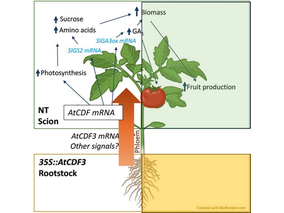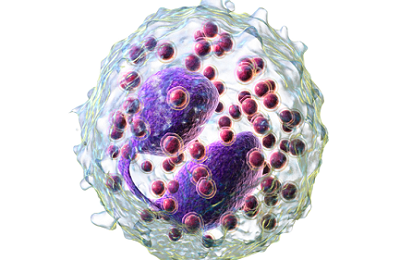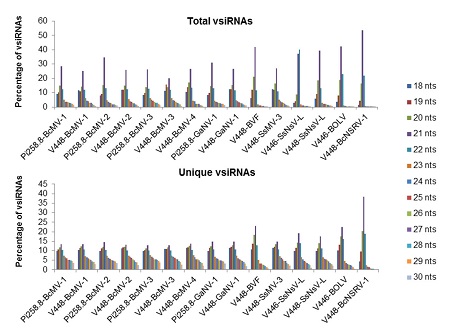The gene silencing is a mechanism that controls several developmental processes in plants, animals and fungi, and is also a potent antiviral defense mechanism. The process begins when the virus enters the host cell with the production of molecules with double-stranded RNA features derived from the virus that are recognized by a specific type of RNase III called Dicer and sliced into short RNA duplexes, between 21 and 24 nucleotides, that are called viral small RNAs. They act by binding to other plant proteins called Argonauta and direct them towards complementary viral RNA molecules which will be degraded by the endonuclease activity of these proteins. The knowledge of the characteristics of the populations of small RNAs formed during viral infections can help us to understand this important antiviral defense mechanism and use it in control strategies.
In this work we have done a comprehensive study of the characteristics, abundance and diversity of populations of small RNAs derived from different species of mycoviruses infecting isolates of two species of the fungus Botrytis. Mycovirus-derived small RNAs are mostly of 21, 20 and 22 nucleotides in length, are of positive and negative orientations in a similar ratio or are mostly of positive orientation, starting mainly with an uridine residue and are distributed throughout the viral genome but heterogeneously, with peaks of accumulation of viral small RNAs distributed along the entire viral genomes. We have shown in this study that small RNAs derived from mycoviruses have similar characteristics than plant-virus small RNAs, suggesting that the antiviral silencing pathway is shared among these organisms.

The research team observed changes in head circumf...

AtCDF3 gene induced greater production of sugars a...

Un estudio con datos de los últimos 35 años, ind...

En nuestro post hablamos sobre este interesante tipo de célula del...

La revista ‘Nature Protocols’ selecciona esta técnica como “pro...
Biotechnology portal in Spain
Subscribe to our newsletter and stay up to date with the latest news and deals!
2013 © Biotech-Spain.com - Site Developments SL. All Rights Reserved. Terms of Service | Privacy Policy
Articles
Directory
